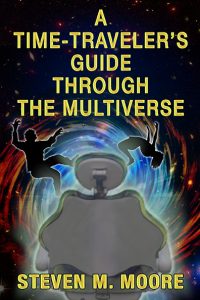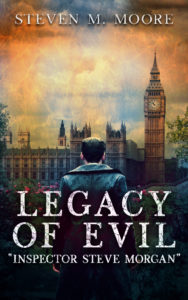POV and person…
While I’ve written about this topic before, I still see a lot of confusion out there. Let’s go over the basic ideas again.
Most fiction is written in a main character’s point of view (POV): The fictional world of a novel is seen from the eyes, ears, and other senses of one or several protagonists, or even a villain’s. But that POV can change from chapter to chapter or even section to section, either because there isn’t just one main character. Authors (even famous ones) mangle POV, their “head-hopping” often causing confusion for readers.
Another POV is omnipotent or God’s-eye view of what’s going on. In other words, the author knows all and let’s the reader see all that he knows. It’s limiting, and it can make internal dialogue awkward. I can’t recommend it.
POV is related to but not the same as person. If I write a story or parts of one in first person, it’s clear that the POV is of that first-person character. If I write a story in third person (much of fiction is written that way), there can be multiple POVs.
Because I like to experiment, the entire “Detectives Chen and Castilblanco” series has Castilblanco in first person and other main characters in third person with their corresponding POVs (without head-hopping in the same section…unless I’ve made an error).
 In The Time Traveler’s Guide through the Multiverse, I alternate between the two main protagonists, Gail and Jeff, in first person—it’s a sci-fi rom-com, so I thought readers might be interested in observing the intimate thoughts of each one.
In The Time Traveler’s Guide through the Multiverse, I alternate between the two main protagonists, Gail and Jeff, in first person—it’s a sci-fi rom-com, so I thought readers might be interested in observing the intimate thoughts of each one.
Mangling POV and person is easy to do; managing it is hard. A teeny mangling isn’t a great sin, though, unless it creates confusion in readers. If readers stop to wonder how Sam knows what Samantha is thinking (and Sam doesn’t have ESP!), the author has a problem.
Many authors don’t understand POV and person. In some of my interviews, I’ve asked the interviewee, “How do you use POV?” I receive a broad spectrum of answers. It’s often not considered an element of storytelling as important as plot, characterization, dialogue, and so forth, so it’s often neglected and mishandled. When I started putting my stories “out there,” I mishandled it. An author friend set me straight. Checking for head-hopping is now part of my copy-editing check when I finish a manuscript. I go through every section and ask myself, “Whose POV am I using?” and “Is there more than one?” If I can’t answer either question, I know I’m in trouble.
***
Comments are always welcome. (Follow the rules on the “Join the Conversation” web page.)
 Legacy of Evil. This first “Inspector Steve Morgan” novel, both a British-style mystery and a suspenseful spy thriller, is hot off the press (meaning Draft2Digital). Former Scotland Yard Inspector Steve Morgan receives his first murder case after a transfer to Bristol PD and a stressful secondment to MI5. An old man’s murder is soon followed by three related ones. Their investigations lead the DI and his team to probe the operations of a national crime syndicate as well as uncover a Russian oligarch’s plans to destabilize the UK. Eventually, both MI5 and NCA become involved. (Esther Brookstone doesn’t go away completely. She has a cameo here.) This book is available wherever quality ebooks are sold (just not on Amazon).
Legacy of Evil. This first “Inspector Steve Morgan” novel, both a British-style mystery and a suspenseful spy thriller, is hot off the press (meaning Draft2Digital). Former Scotland Yard Inspector Steve Morgan receives his first murder case after a transfer to Bristol PD and a stressful secondment to MI5. An old man’s murder is soon followed by three related ones. Their investigations lead the DI and his team to probe the operations of a national crime syndicate as well as uncover a Russian oligarch’s plans to destabilize the UK. Eventually, both MI5 and NCA become involved. (Esther Brookstone doesn’t go away completely. She has a cameo here.) This book is available wherever quality ebooks are sold (just not on Amazon).
Around the world and to the stars! In libris libertas!
